Cortiçada Experimenta Paisagem is a manifesto of change of a territory destiny. Art creation and community engagement are the means for a sustainable long-term territorial transformation. Art routes, permanent artworks and Cortiçada Art Fest take place in rural communities aspiring new forms of living. Each action and creation pursuits an inclusive communication of heritage values and promotes aesthetic experiences in the landscape, bringing together communities with their territory identity.
Cortiçada Experimenta Paisagem, Art Routes of Cortiçada and Water Lines, is a community driven project for a territory change. The centre of Portugal is a landscape marked by rural depopulation and cyclical fires, but despite being a territory at risk, its community inhabits and persists, transmitting resilience and searching for alternative solutions for urban habits in a former rural territory.
This project is a manifesto of change of a territory destiny and can only be achieved through community engagement in a sustainable long-term and meaningful process of landscape transformation.
Through community involvement and contemporary creation, the project aims a territorial scale open-air museum developed with the public, rooted in the landscape resources, and revealing tangible and intangible heritage. The main aim is to promote community-place’s transformation though contemporary creation, manifesting art as a powerful means to heritage revitalization and place reappropriation.
The project most visible expression are 2 cultural itineraries and 5 permanent artworks in the landscape that unfold shared processes of transformation and creation, and that intensify the cultural and aesthetic experience of each place.
The project launched a sustainable transformation rooted in community involvement actions integrating toolkits and work support to place enhancement. On the other hand, opens a curatorial practice of cultural events from local to global, digital to presential as “At the window talks”, “Experimenta Paisagem Encounters” and “Cortiçada Art Fest”.
In an implausible burned landscape with resilient change-driven communities, this anti-destiny manifesto settles “the reencounter between communities and their territory, opening new perspectives of attracting people and evolving landscape qualities” and emphasise the pursuit of an inclusive communication of heritage values and aesthetic experiences at a territorial scale and at human scale.
Please highlight how the project can be exemplary in this context
Cortiçada Experimenta Paisagem key objective is to implement a sustainable strategy through the empowerment of local communities with a concept of sustainable territorial development and tools for change.
Addressing this propose demands not just an immediate impact in places and communities, but to bring about an integrated development of landscape, economy, built environment and culture.
For this reason, the project intercross actions of valorization of cultural and natural heritage, recreation of endogenous resources, intensification of aesthetics experiences and of supporting existing and desired social dynamics.
Art creation and community involvement can only be trustworthy in a long-term perspective when addressing to a sustainable development, targeting Green Deal objectives delivery.
That’s the reason the project stimulates environmental regeneration processes through campaigning and awareness-raising. Landscape and built environment improvement comes together through integrated artworks and surrounding project, the co-creation and dissemination of development perspectives and through the support of environmental actions.
As a matter of fact, community involvement led to the project engagement in community clean water actions campaigning for efficient cleaning stations and in existing trails enhancement actions with Qrcode signage linked to heritage videos.
This commitment with communities struggles and aspirations led us to co-create Improvement Toolkits and renewing development perspectives with endogenous resources. New possibilities of local resources were investigated and communicated through art and design, endowing resin in Moongate artwork and breaking new ground in heat-transformed slate in Magma Cellar and in the new brand image of the entrepreneur community of Cunqueiros.
Each action of development, creation, and celebration favored digital communication, circularity of paper documents, local gastronomy and permanency for long-term reuse.
Please highlight how the project can be exemplary in this context
What is it that we all well know, that is like to be transported by things we see, in a particular moment and, somehow, to feel a sense, a meaning, far beyond any explanation? A kind of a certainty beyond the bounds of words. Is it a feature of the world or an illusion of imagination? An enjoyment of reality…
We departed from a Manifesto for a territory change, a territory burned by wild fires and abandonment by decades. And this change would be slowly settled through art creation and community involvement.
And we pointed to this shared experience of aesthetic transformation, as the common ground for local inhabitants, global cultural and creative communities, and diversified visitors.
Each artwork, each creation and each event concur to this enjoyment of reality.
Farol dos Ventos (Lighthouse of the Wind) appears in the distance as a sign suggesting movement on the crest of the mountain. It incorporates ancient legends in an appeal to the joy of reaching the top and contemplating the unknown.
Moongate appeals to the pleasure of entering a mysterious garden, present in the letters of the local Jesuit who once reached Tibet, and suggesting by reflections, light and transparencies changes, the fascination of the unrevealed.
Véu (Veil) multiplies and fragments reality through mirrored surfaces, in an apparent misunderstanding of memory between rural and urban, between heritage and contemporaneity.
Menina dos Medos (Girl of the Fears) refers to the delicacy and human fragility in the scale of the millenary landscape with an apparent contradiction of belonging to its place for immemorial times.
Magmacellar represents the place of encounter and transformation, inviting to have a new perspective on the landscape and magnetizing through recreated textures of shale transformed by pyro expansion.
Each place is transformed with a renewed sense of belonging while inviting inhabitants and visitors to an enjoyment of place, between illusion of imagination and reality.
Please highlight how the project can be exemplary in this context
Between community involvement and the creation of an open-air museum without walls, of free and democratic access is the key to this project. The challenge is how to achieve art routes and artworks that reveal landscape and place heritage values for local inhabitants, diversifying visitors, and an international creative community.
First, though the creation of free access and cost-free art itineraries of contemporary artworks that value local heritage references, walking trails, villages public spaces and local inhabitants’ daily life.
The inclusion of a diversifying public in the meaningful enjoyment of places is delivered through the pursue of a contemporary art expression deeply rooted in place and communities’ analysis. By means, each creative achievement, from artworks, videos, branding to communication media, embodies solutions that synthesize erudite and popular culture, developing an equitable and intellectual access.
At all stages of the project, different levels of participation are developed. With local inhabitants and associations, the project develops knowledge sharing and the empowerment with new tools as the Improvement Toolkit. Through the engagement of decision makers, local institutions, and different citizen groups take part in actions of enjoyment and transformation.
A fundamental strategy of inclusion is the enlargement to different geographies and backgrounds through social networks, digital media, conversations, and conferences.
Simultaneously, the project stood for an inclusive communication methodology, developing design anchored in local values of heritage, shared by communities but taking a universal form and language for a global community.
Finally, in a progressive process of commitment, the project developed co-design processes such as the brand image of Cunqueiros and the trail signage and, co-created events and instruments of transformation, converging with the aspirations of communities and their empowerment.
Please highlight how this approach can be exemplary
The project Manifesto defines that territory transformation, beginning with community involvement, has an aesthetic impact and aims a sustainable development.
But this project also settles the boundaries of territory transformation in a long-term sustainable development, centred in human appropriation through heritage valorisation.
It is through an inclusive community involvement that this project implements a co-created concept of territorial development anchored in 2 cultural itineraries, 5 artworks in the landscape and cultural and awareness-raising actions.
These actions integrate contemporary creation and culture, local resources, and rural transformation, through the empowerment of communities, have the impact of restructuring environmental regeneration processes and of renewing development perspectives through endogenous resources and local traditions.
The artworks creation, the co-creation of a brand image and the media creations present themselves as tools for the appropriation of places and their values, for the promotion of the qualities of the natural and cultural landscape through an aesthetic experience.
The landscape art routes are freely accessible and democratic, materialize solutions for artistic and cultural enjoyment that synthesize erudite and popular culture, accessible to different audiences and aggregators of diversity, recreating cultural experience with local communities.
This project changed the perspective of an abandoned territory to a landscape of renewed possibilities of enjoyment though permanent artworks that reveal each place values, that unfold local community involvement and that promote a sense of belonging. Events like Cortiçada Art Fest, walks, talks and conferences gave visibility to almost hidden heritage values but most of all, promoted renewed perspectives of sustainable development in different fields as heritage, urban planning, landscape design, architecture, and art.
The main achievement is inhabitants, visitors and media change of perspective of this in-risk and abandoned territory, to a landscape of a possible enjoyment and pride.
This transformation is grounded in the reconnection between communities, its heritage, and a transformed landscape.
Through the Lighthouse of the Winds and the Girl of the Fears, communities are invited to a new perspective over the geological monuments, human millenary transformations, and also new interventions of nature sport activities. Through the sequence of cables of Farol, communities relate to the legend of the Moorish, and through the apparent abandonment of Menina, connect with secular memories of fears. The recovered trail of Menina dos Medos is an example of knowledge transmission shared in signage qrcodes with locals stories recorded on video.
But it is through Moongate, Veil and Magmacellar that the project draws attention to streams, reconnecting Sertã, Oleiros and Cunqueiros with its initial places. Moongate suggesting memories of the local Jesuit who reached the east, Véu recreating relations between the village limits and the Philippine bridge, and Magmacellar emphasising the encounter over the bridge, the place of an abandoned economy.
Beyond this process of heritage reconnection, a decisive impact is the empowerment of regenerative processes of transformation through an Improvement Toolkit, campaigning for cleaning the water and recovering burned areas, and a business boosting through a brand image co-creation.
From 2019 to 2021, the project achieved 2 art routes, 5 permanent artworks, 3 workshops with local artists, the co-creation of 1 Improvement Toolkit and 1 Brand-image, 6 online talks, 28 streaming visits, 2 heritage videos, 1 signage trail qrcodes with 6 videos, 1 Cortiçada Art Fest event, 2 hybrid conferences at Centro Nacional de Cultura with 16 invited artist/architects, 1 online exhibition with 7 artists, EIT manufacturing and Philosophy Festival participation.
Please also explain the benefits that derived from their involvement.
Over the course of 3 years, the involvement of communities gained scale, expanded the contexts of action from local to national and segmented strategies, with different levels of participation, from attendance to co-design.
Communities are involved through all stages of creation of the permanent artworks and landscape itineraries. Municipalities and institutions are commited as partners in the survey of heritage values. Citizens and local associations are involved through conversations and interviews, as hosts of collective activities (olive picking, 100th birthday party, fado night), as main actors of transformation campaigning and as privileged audience of planned activities (workshops and live visits to the works). These Live streams are a fundamental tool of place and artwork appropriation.
The celebration of the delivery of artworks to the communities (Cortiçada Art Fest) involved different formats according to local dynamics, including picnics, workshops with local artists, an open air exhibition, walks with people's stories about symbolic places.
Involving citizens, decision makers and technicians, with their aspirations and knowledge, led to the co-design of the project itself, co-creating the improvement plan, the brand image, and a trail with videos.
The expansion to an international cultural community was boosted by a continuous social media communication and the overwhelming participation of Portuguese immigrants different geographical contexts proud of their origin region. On the other hand, the project enlarged the partners network through Conversations at the Window of the Landscape, the Cortiçada Online Exhibition with 7 artists, and the Encounters Experience Landscape with 16 invited artist and experts. A visibly committed network revealed by critic papers from Laura Castro and Nuno Grande, in activities participation and notices of Dgartes, Regional Directorate of Culture, National Culture Centre in Lisbon, and Tourism Centre of Portugal.
Cortiçada Experimenta Paisagem implements local solutions that help to deliver the European Green Deal with tangible changes on the ground that fosters EU long-term vision for rural areas.
This pilot project establishes interconnected transformations of new forms of questioning our perspectives and mind-set around the core values of aesthetics, sustainability, and inclusion.
The strategy to displace contemporary art and culture from traditional institutions to open air, to face burned landscapes and to meet depopulated territories, constituted a challenge of construction of an anti-destiny landscape.
The method and actions questioned mainstream models, focusing on integrated disciplinary solutions, promoting perspectives on how to inhabit the rural world with urban experiences, beyond agriculture, farming and forestry. The emerging opportunities of digital transition and Green Deal were fostered by covid 19 pandemic and contributed to identify means to improve rural quality of life, to interconnected with global communities, and to foster environmental quality living.
Transformations were carried out in terms of the environment, enabling innovation through,
.Actions to enhance endogenous resources (resin, shale, trails in the landscape, public spaces in villages)
.Campaigning to cleaner water lines (Ribeira da Sertã and Ocreza river), improvement of burnt areas, and internet access, crossing digital media and face-to-face participation
.Supporting inclusion of environmental partners networks (CCVF, Quercus, Naturtejo)
A project of exemplary interconnected transformations on the ground,
.Each intervention is symbolic of a transformation opportunity and of heritage valorization.
.Each place experience was enhanced through environmental quality and sensorial aesthetic strengthen.
.Social local dynamics were the central force of co-created solutions and future construction of a sustainable living with nature, urban habits through digital community enlargem
In face of the enormous challenge of this particular in-risk territory, anticipating green deal delivery and post-pandemic changes, the project proposes non-conventional approaches to art exhibition and cultural programmes, works across disciplines integrating territory transformation and heritage valorisation and settles an original pattern of outdoor, presential, hybrid and digital communication.
The boundaries of the Landscape planning strategy are settled in the choice of each places to transform. The exemple of Magmacellar place, a long decision process with the involvement of decision makers and citizens between a touristic place and the chosen village inhabited centre, is an opportunity to launch place reappropriation. These are fundamental steps of identification of heritage values and possibilities of development that led to the co-creation of future development concept.
Community involvement in the project led us to an empowering commitment with water cleaning campaigning (Sertã stream and Ocreza river) with local Associations, Ambiental partners (Quercus and NaturTejo) and municipalities influence. On the other hand, the development of the 5 artworks projects dynamized communities to landscape and built environment ameliorations and led to the co- design of an Improvement Toolkit and disseminating practices of sustainable and aesthetic quality refurbishment that safeguard and valorise heritage.
The pandemic evinced the urgency of internet access daily-basis and the value of close to nature living fostering our commitment in the campaign movement that achieved an internet infrastructure for Cunqueiros, the co-creation of an innovative tourism concept (branding image and trail restoration with signage linked to heritage videos) and open-air programmes crossed with hybrid and digital activities.
Approaches that launched an open-air museum of singular contemporary aesthetics experiences sharing local heritage and inhabitants aspirations.
Please provide clear documentation, communication of methodology and principles in this context.
This project is a pilot case of transformation of territories at risk due to wildfires and abandonment and as a model for new experiences in rural areas.
It is a pilot case of global priorities – Green Deal and Long-Term Vision for Rural Areas – replicable in other at-risk territories. Replicable in areas with issues arising from extreme low-density areas (south Europe countries, Bulgaria, Norway), wildfires high risk areas (Southern Europe Mediterranean Countries, Canada, Australia), and climate change in-danger zones (fires, drought, floods, snowbreak) and also rural areas searching for new models of rural development.
Replicability stems from the objectives and methodology to the initial question reconsidered in each new area: how to invert the destiny of a territory?
The reformulation of objectives and methodology should consider the 3 project pillars with tested tools and documentation on the website:
. Contemporary Creation as a tool for mediation of culture. This approach was tested, and its theoretical body developed through articles (Laura Castro and Nuno Grande) and debates (Experimenta Paisagem Encounters) and its effectiveness proved in the re-appropriation and meaning of places, safeguarding and co-creation of a development concept rooted in heritage.
.The territorial transformation of natural and cultural landscape applied in a perspective of sustainable development, in a transdisciplinary way. This approach was tested with local problems and aspirations, in-line with regional planning and with EU's commitment to a vision for rural areas.
.The involvement of communities as the guiding thread of this transformation project guarantees the questioning of each action, an operational analysis, and the development of interventions with the empowerment of communities and agents of transformation. The local/global dimension is achieved through the digitization of this process, in a continuous face-to-face/digital articulation, local/online tools.
The 3 year implementation of Cortiçada Experimenta Paisagem combine the European Green Deal Vision with “on the ground evidence of tangible changes” of sustainable an environmental driven solutions, socially inclusive actions with an aesthetic impact.
On one hand these outstanding results are a consequence of the project enlargement due to local communities’ engagement and people’s empowerment and commitment if developing their own places, villages and territories.
On the other hand, the enlargement to a broader community of partners as National Centre of Culture (CNC), Regional Directorate of Culture, Regional Directorate of Tourism, Quercus, NaturTejo, Artists, Architects and Curators, granted expertise, recognition and visibility to the global and local issues addressed.
In this context, the New European Bauhaus Prize would enhance the project recognition, fostering its internationalization with a global partners network with expertise in key themes of territory transformation, art creation, citizen engagement and communication.
Between 2019 and 2021, this project artworks and methodology, was developed by Mag’s team with the intensive support of 3 municipalities, local associations and increasing networks of experts. In a future development, this open-air museum without walls would be a pilot territory for change through art and landscape creation by international artist, architects, curators, and collectives.
Furthermore, with this international scope and financial support this tested model of change can be replicable in other high-risk regions and address global issues of Green Deal with on the ground innovative actions and citizen engagement.
Finally, this international development of Cortiçada Experimenta Paisagem, with strong networks and new projects implementations, would enhance the EU role in the forefront of a sustainable and inclusive development, balancing rural and urban, local and global, digital and on the ground, innovation and heritage.
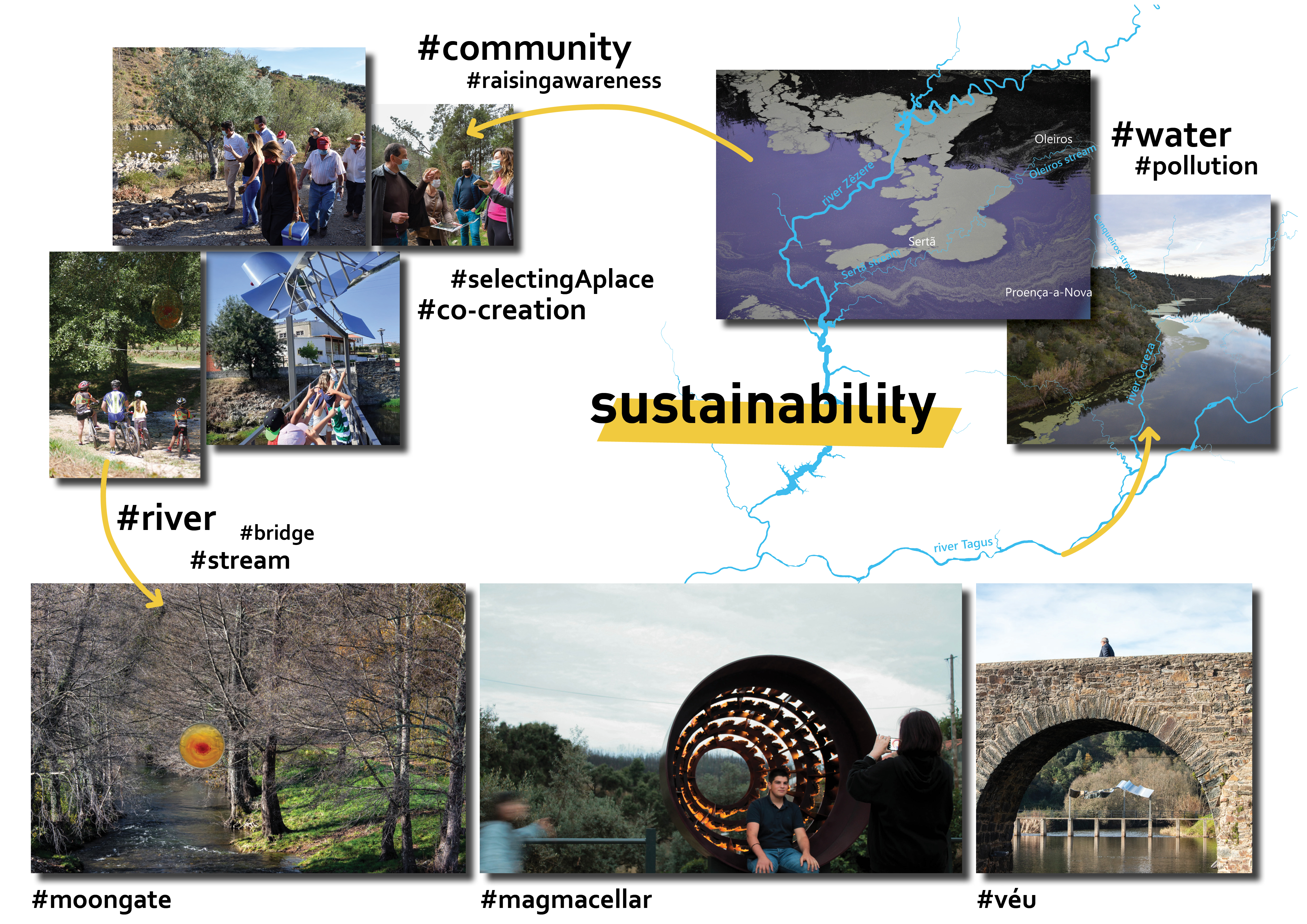
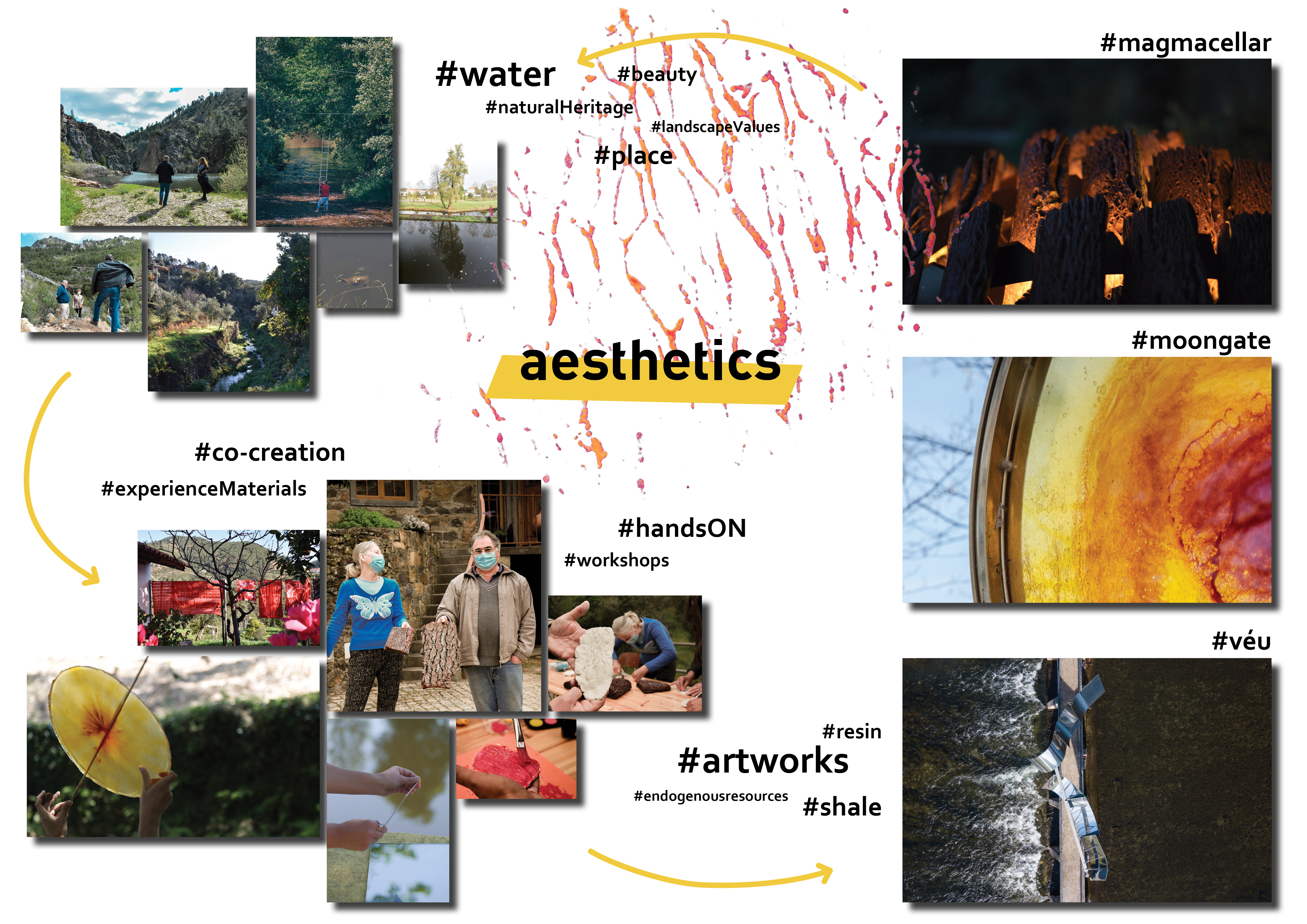
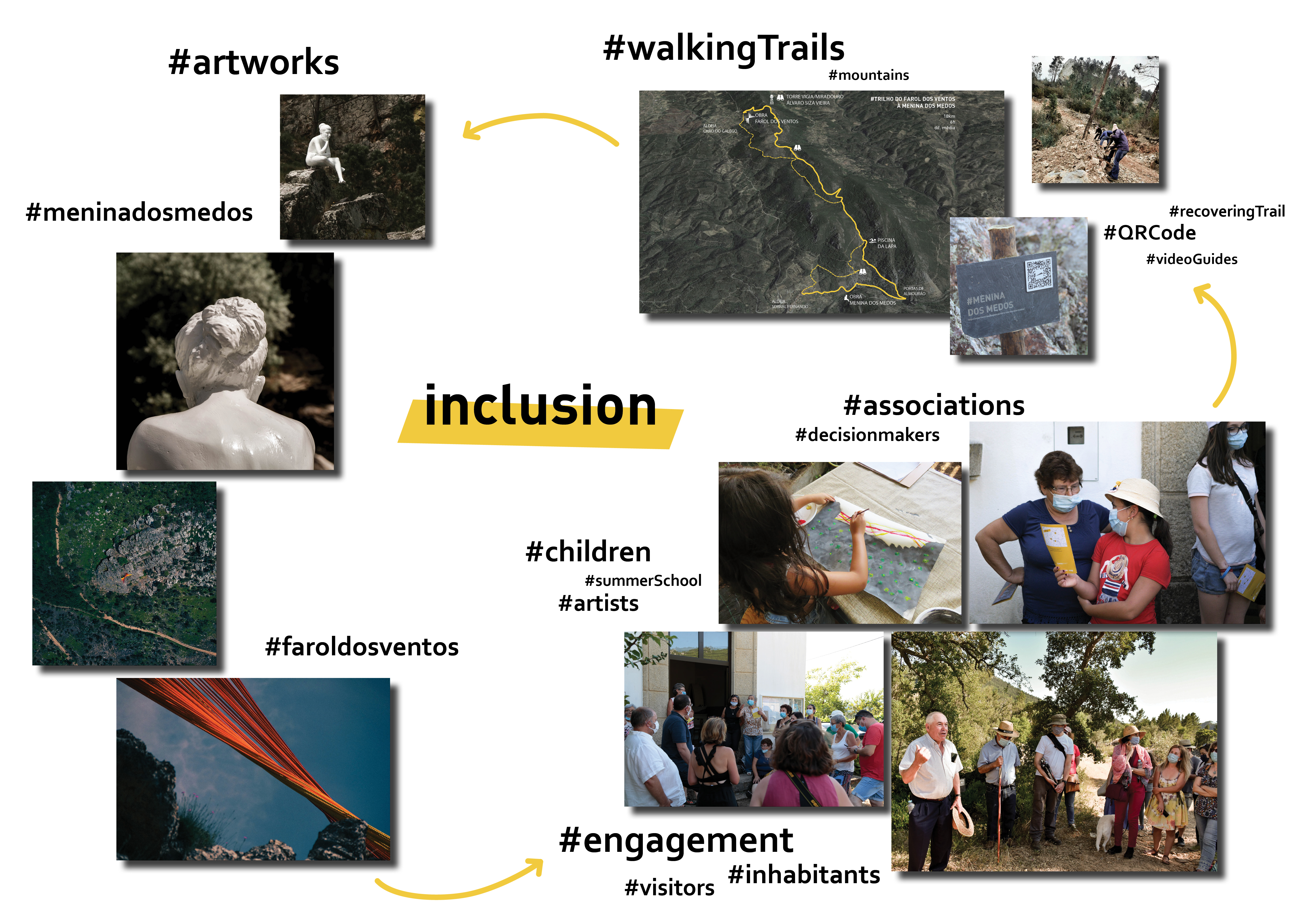
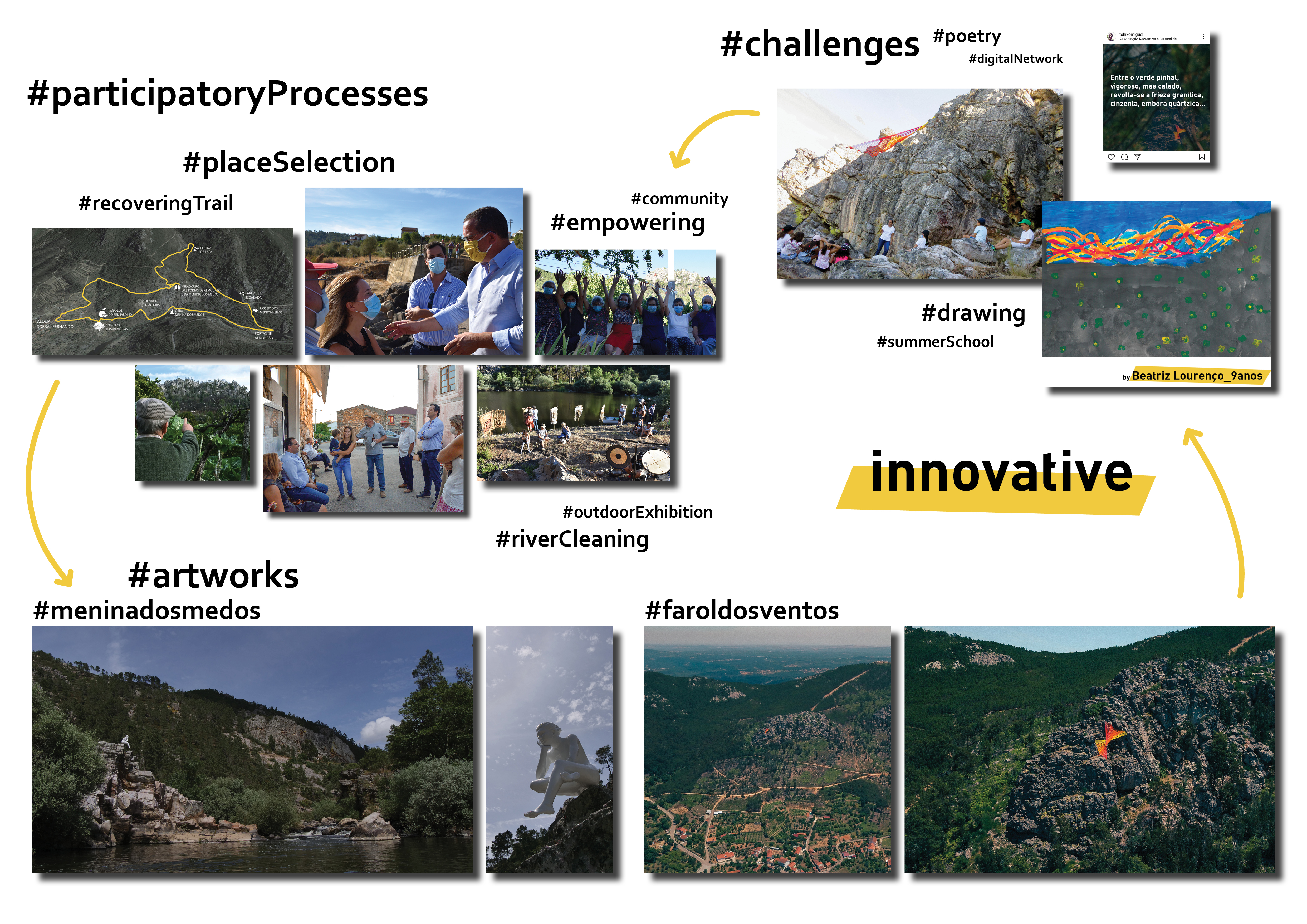
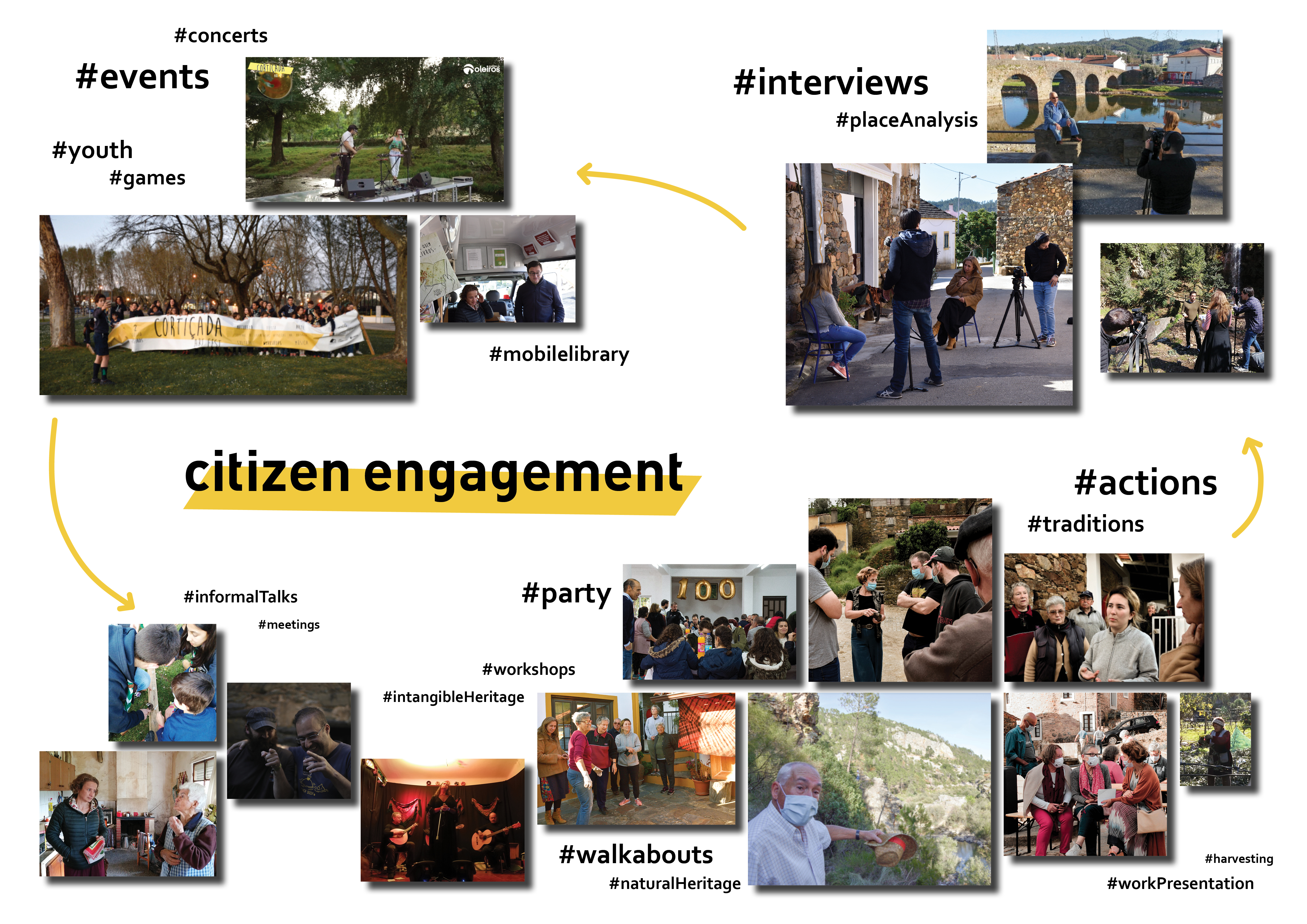
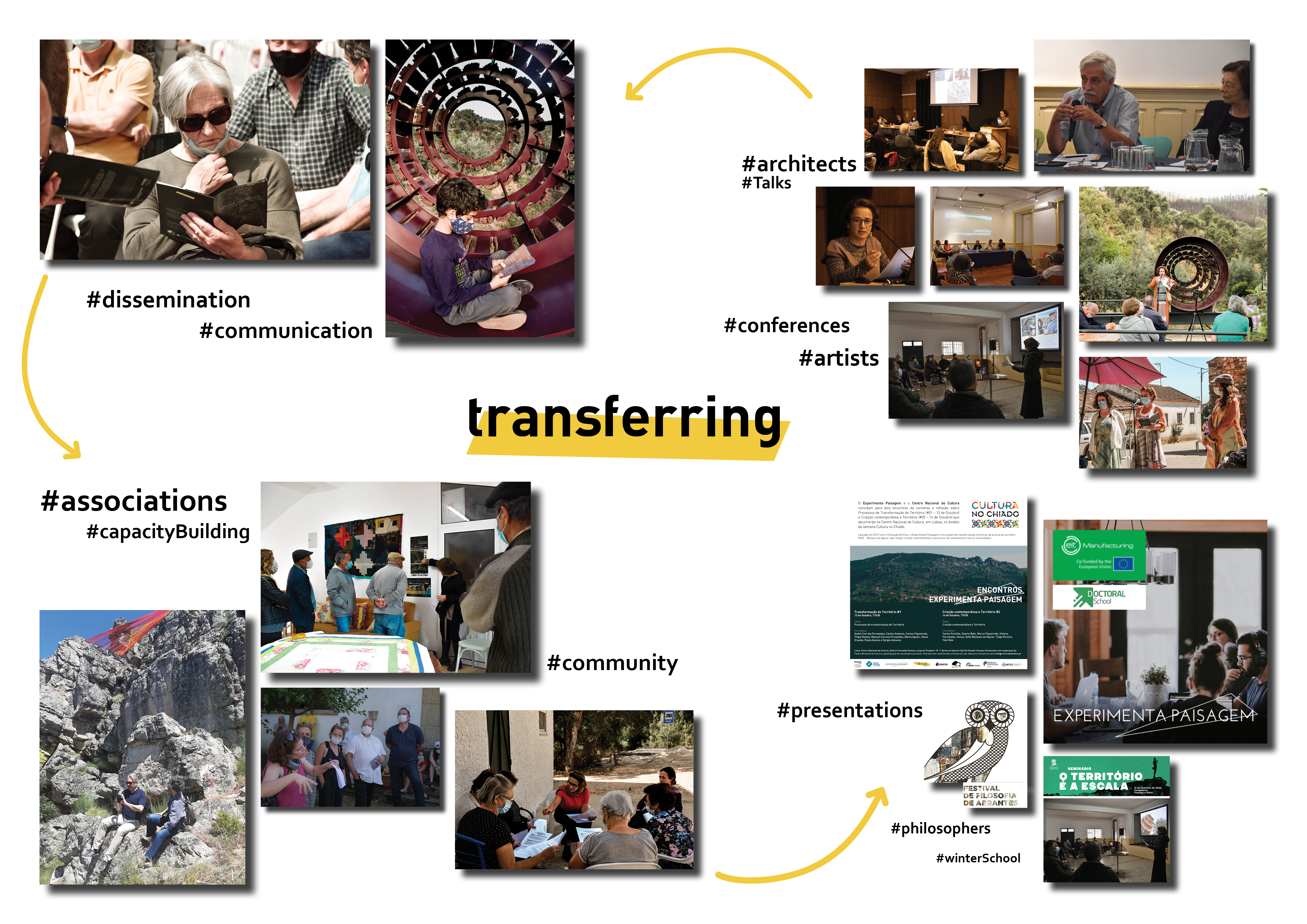
@Marques de Aguiar, Arquitectura e Urbanismo Lda., 2021
Content licensed to the European Union.